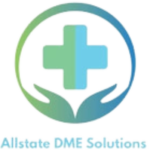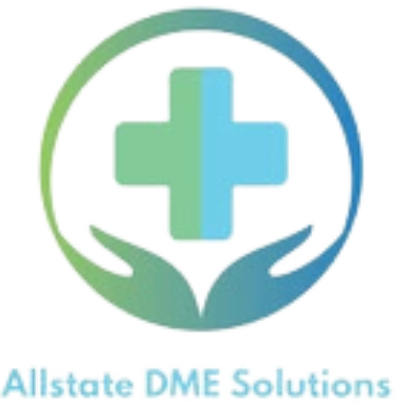
Durable Medical Equipment (DME) accreditation is a critical process that ensures the quality and safety of medical equipment used by patients in various healthcare settings. This accreditation involves rigorous standards and protocols to guarantee that both the equipment and the services provided meet specific criteria for excellence in healthcare.
In the realm of healthcare, DME accreditation is more than a mere formality; it’s a commitment to patient safety and quality care. It sets a benchmark for healthcare providers, ensuring that they are equipped to offer the best possible care to their patients.
The Pillars of DME Accreditation
Standards and Compliance
Accreditation revolves around adhering to established standards that govern the quality of equipment and services. Compliance with these standards is non-negotiable, as it directly impacts patient care.
Patient Safety and Quality of Care
At the heart of DME accreditation is the unwavering focus on patient safety and the quality of care. These two elements are the bedrock of trust between patients and healthcare providers.
The Essence of Patient Education in DME
Educating for Better Outcomes
Patient education plays a pivotal role in DME accreditation. When patients understand the use and maintenance of their medical equipment, it leads to better health outcomes and reduced complications.
Empowerment Through Knowledge
Educating patients is not just about conveying information; it’s about empowering them. Knowledgeable patients are more likely to be active participants in their care, leading to improved health management.
The Role of Patient Education in DME Accreditation
Enhancing Patient Compliance
Patient education is integral to DME accreditation as it directly influences patient compliance. When patients understand the importance of correctly using their equipment, compliance naturally improves.
Bridging the Gap Between Patients and Providers
Education helps in bridging the communication gap between patients and providers. This connection is crucial for a successful healthcare journey, especially when dealing with complex DME.
Strategic Approaches to Patient Education
Tailored Information Delivery
One size does not fit all in patient education. Tailoring information to meet individual patient needs is crucial for effective education and better health outcomes.
Utilizing Modern Technology
Leveraging modern technology, such as apps and online resources, can enhance the effectiveness of patient education, making it more accessible and engaging.
Continuous Education and Feedback
Education is an ongoing process. Continuous learning and feedback are essential for keeping both patients and providers updated with the latest information and practices in DME care.
Impact on Healthcare Providers
Improving Provider-Patient Dynamics
Effective patient education in DME accreditation can significantly improve the dynamics between providers and patients, fostering a relationship based on trust and mutual understanding.
Boosting the Quality of Service
Educated patients can actively contribute to the quality of service by being more compliant and proactive in their care, ultimately leading to better health outcomes and satisfaction.
Legal and Ethical Considerations
Patient Rights and Privacy
Patient education must align with legal standards, especially concerning patient rights and privacy. It’s crucial to ensure that patients are informed about their rights and the confidentiality of their health information.
Ethical Implications of Patient Education
There are ethical implications in patient education, such as the need for accuracy, transparency, and respect for patient autonomy. These factors play a significant role in the integrity of DME accreditation.
Success Stories in DME Accreditation
Case Studies and Best Practices
Exploring success stories and case studies in DME accreditation can provide valuable insights into effective patient education strategies and their impact on healthcare.
Lessons Learned and Future Implications
Learning from past experiences and anticipating future trends is crucial for advancing patient education in DME accreditation. These lessons shape the strategies for continuous improvement in healthcare services.
Challenges and Solutions in Patient Education
Identifying and Overcoming Obstacles
Patient education faces several challenges, such as literacy barriers, cultural differences, and resistance to change. Identifying and addressing these challenges is key to successful patient education.
Innovative Solutions for Modern Challenges
Embracing innovative solutions, like digital platforms and personalized education programs, can overcome modern challenges in patient education, enhancing the effectiveness of DME accreditation.
FAQs
What is DME accreditation, and why is it important?
DME accreditation is the process of certifying that the quality and safety of durable medical equipment meet specific standards. It’s important because it ensures the provision of safe and effective equipment to patients, enhancing the quality of healthcare.
How does patient education impact DME accreditation?
Patient education impacts DME accreditation by improving patient compliance, enhancing the understanding of equipment usage, and ensuring better health outcomes. Educated patients are more likely to use their equipment correctly, reducing the risk of complications.
How does technology play a role in patient education for DME?
Technology plays a crucial role by providing accessible and engaging educational resources, such as mobile apps, online tutorials, and interactive platforms. These tools make learning about DME more flexible and user-friendly for patients.
What are the legal and ethical considerations in patient education for DME?
Legal and ethical considerations include ensuring the accuracy and clarity of information, respecting patient privacy and autonomy, and adhering to regulatory standards regarding patient rights and information confidentiality.
Can patient education in DME accreditation improve healthcare provider-patient relationships?
Yes, effective patient education fosters trust and understanding between healthcare providers and patients, leading to improved communication, enhanced care, and better overall health outcomes.
How can healthcare providers overcome challenges in patient education for DME?
Healthcare providers can overcome challenges by understanding patient backgrounds, addressing language and literacy barriers, using culturally sensitive materials, and adopting innovative educational methods to engage patients effectively.
Conclusion
Reflecting on our exploration of the role of patient education in DME accreditation, it’s evident that education is not just a component of healthcare but a foundational element that bridges the gap between patient needs and quality healthcare delivery. By embracing continuous learning and innovative strategies, both healthcare providers and patients can navigate the complexities of DME more effectively, leading to enhanced care, improved outcomes, and a more empowered patient community.




